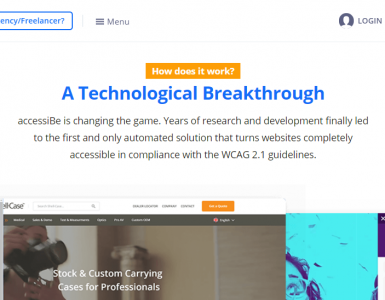Do you want your site to look great on tablets, PCS, and even smartphones? A responsive site is often the answer, but you have to ensure that your responsive site is fast for visitors.
Responsive design is the practice of building a website and formatting it so it can adapt to whichever screen size that accesses it.
With the increasing popularity of smartphones and tablets, more people are accessing the internet through devices that feature smaller screens.
To ensure these devices can obtain full functionality from your website, you must incorporate responsive techniques to your web design. If you’re wondering how to go fully responsive, here’s a quick guide on how to do so.
1. Workable and Flexible Images
A simple design allows for flexible images. You can easily accomplish this through adaptive sizing. You must ensure appropriate sizing for mobile users if you seek decent speeds, which are crucial in responsive design.
You could use varying breakpoints and store numerous image sizes in your data for various screen resolutions.
However, this could prove problematic in terms of bandwidth usage and you can’t develop your website under the assumption that every viewer will have powerful bandwidth access.
A responsive design has flexible grids that you can resize to whichever width. Flexible layouts don’t promote fixed units of measurements such as inches or pixels. This is because the viewport width and height continually change across devices.
2. Include a Viewport
You must integrate a viewport Meta tag even for basic pages. The viewport is a very crucial component for developing multi-device experiences.
Your site won’t function properly on mobile devices without it. The component signals to the browser that the page requires scaling to fit the screen. You can specify various configurations for the viewport to control the page display.
3. Media Queries
Media queries form the core of any responsive design framework. If you lack a responsive theme or have a static site, you could include media queries to your current design. This simply means a stylesheet code dictates how the browser should display your site in various resolutions.
Media queries offer the capacity to indicate different styles for individual device and browser circumstances. The ability to implement distinctively targeted styles leverages responsive design.
Media queries allow for easy change of styles depending on the features of the device providing the content, including the width, display type, orientation, and even height.
They further permit the development of a responsive experience, where the application of specific styles occurs in small and large screens.
4. Eliminate Non-Essential Content
In order for your mobile friendly design to stand out easily, you must bear in mind that some content are not supposed to function in a mobile context.
If these elements exist in your site or potential site layout, eliminate them immediately for whichever mobile setting.
You can accomplish this by applying a not_mobile class to particular elements that you’d like eliminated when users view your site in a mobile context or you could simply eliminate such elements permanently from every site version.
5. Pay Attention to Breakpoints
Breakpoints describe the points at which your website’s content will respond to offer users the best possible layout for varying screen sizes.
Responsive sites will have at least two break points on average. Developing a custom breakpoint is straightforward and merely requires the knowledge on media queries to develop. When creating breakpoints, it’s important you bear these tips in mind:
- Ensure the custom breakpoints don’t clash with the standard ones
- It’s imperative you examine your website at points that are not the default to develop an experience that’s truly cohesive.
- Maintaining consistency in the viewing experience will make you come across as an expert.
Conclusion
Performance is everything when it comes to responsive design. Therefore, considering factors such as flexibility will contribute to websites that perform well and load fast.









